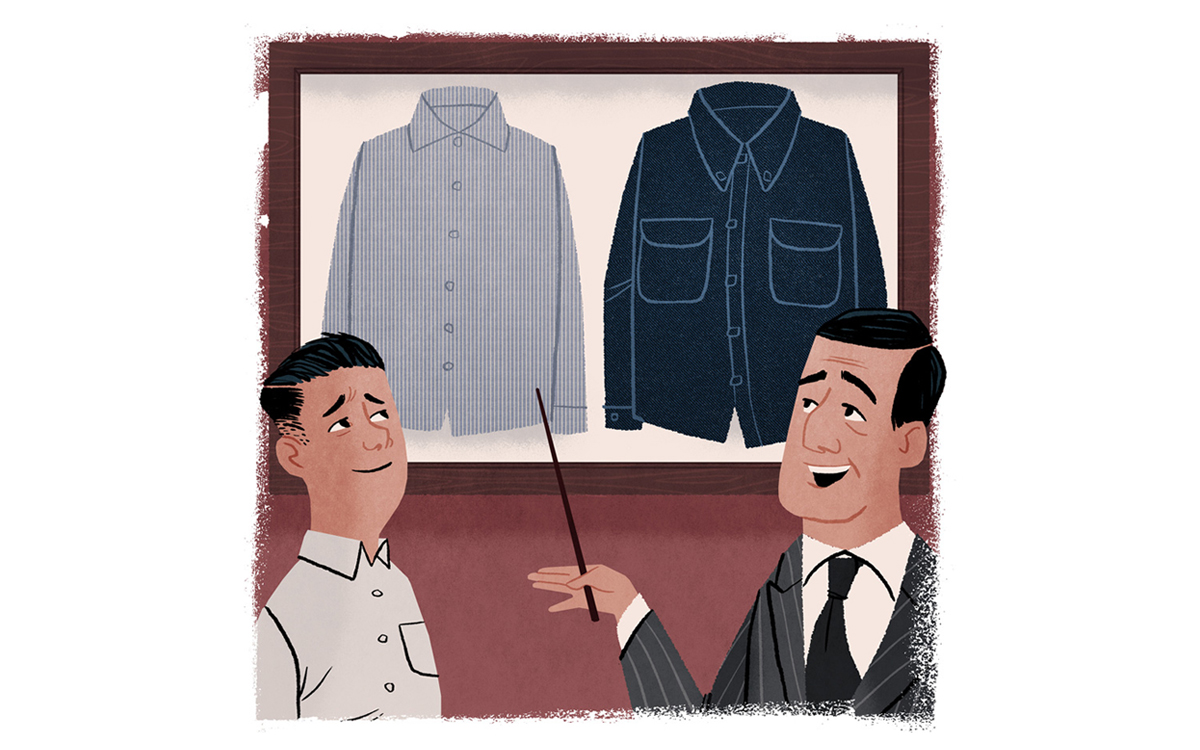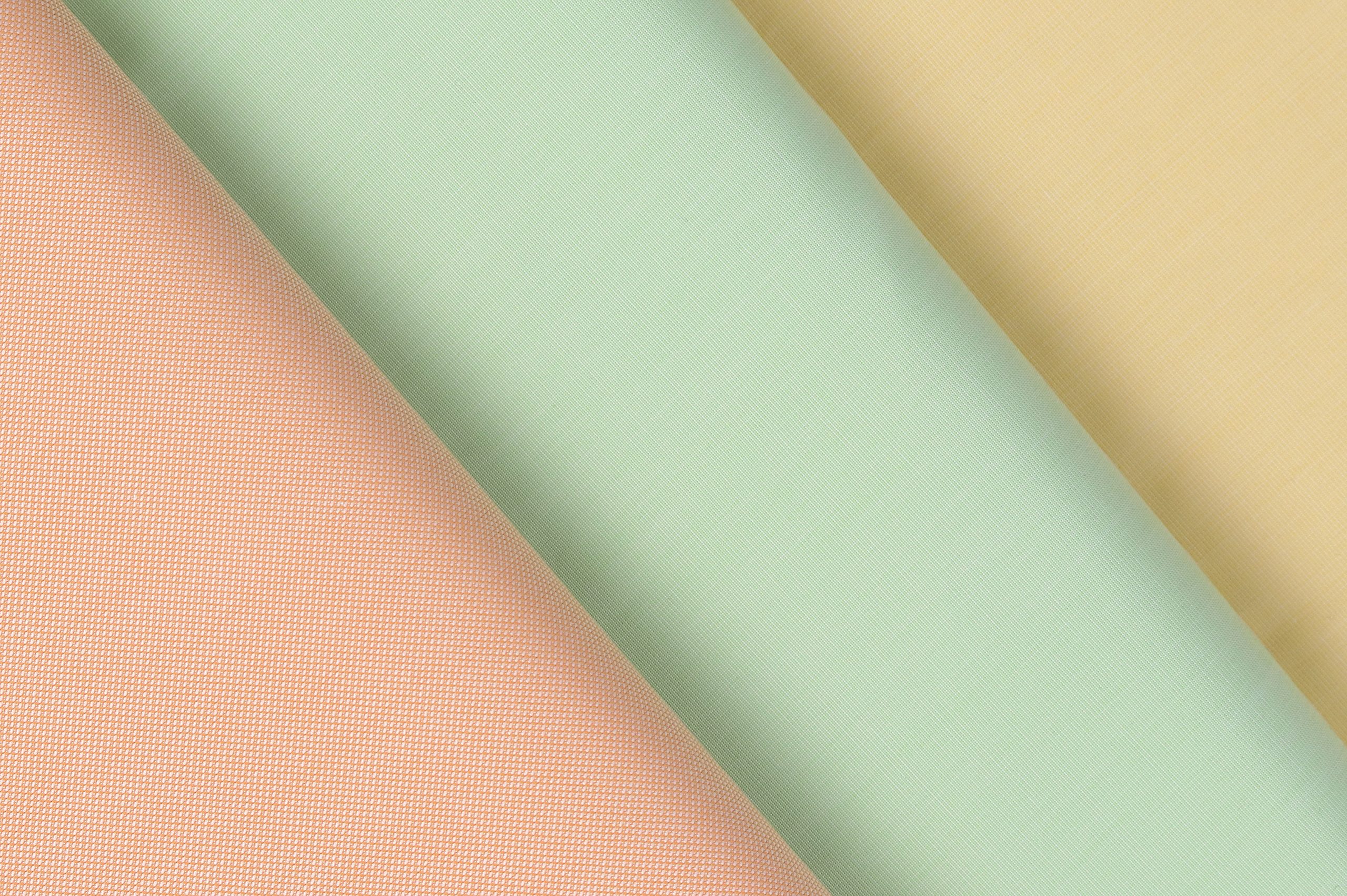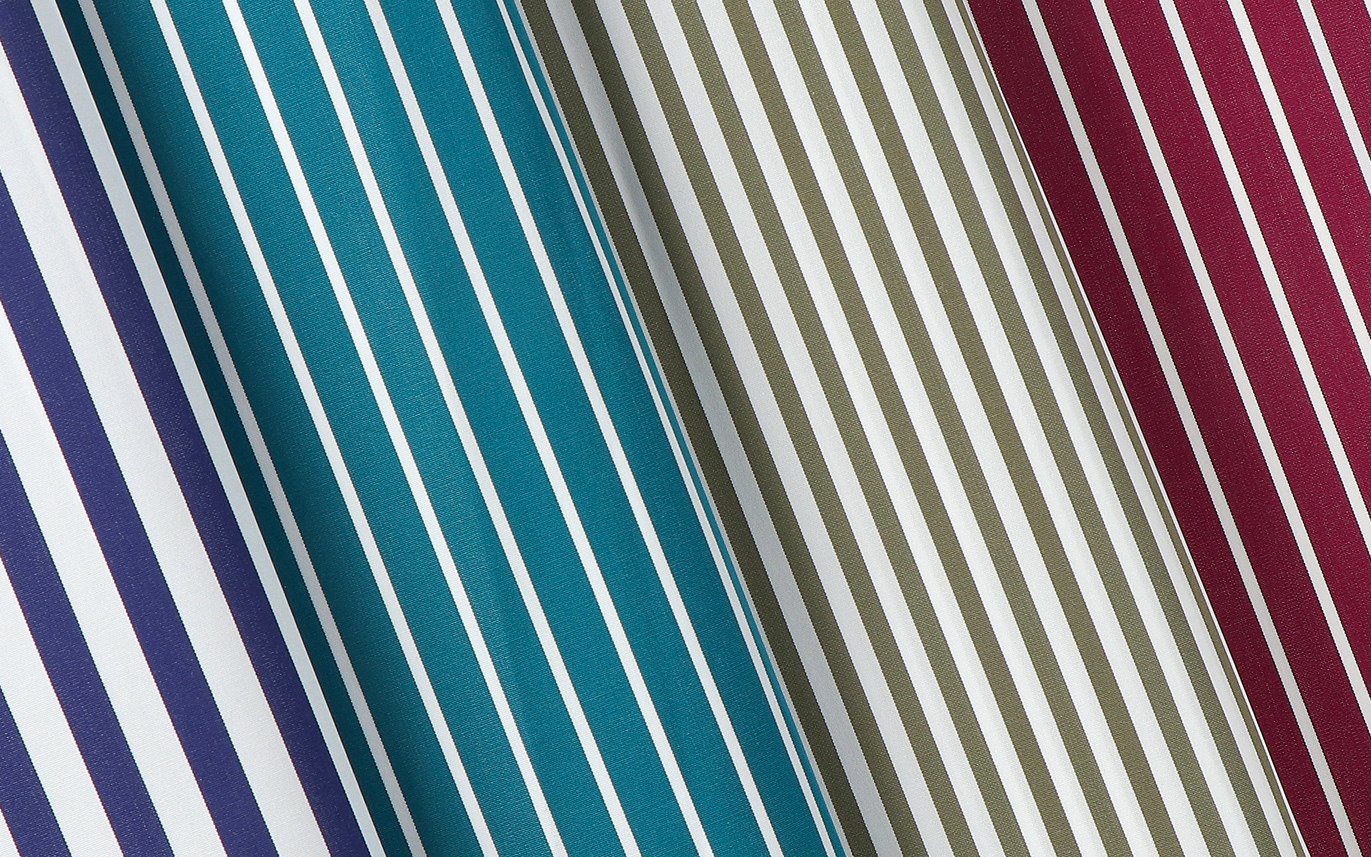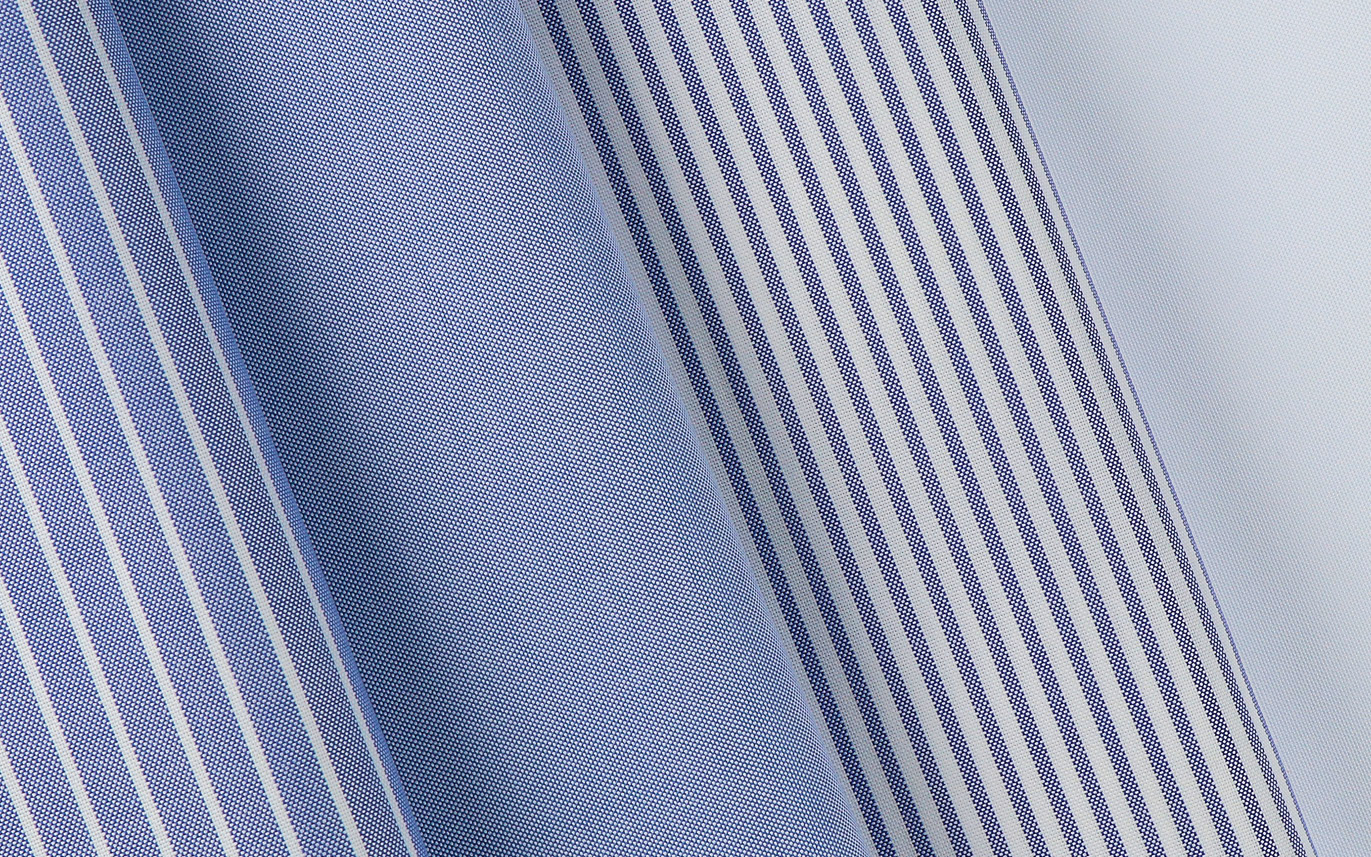

Now, this one is interesting. Hands up, who struggles to figure out what to wear to work these days?
If you raised your hand, I don’t blame you. The past two years really haven’t been kind to the long-held tradition of the business suit and tie; the relaxing of office dress codes throughout Europe and the US has been heralded by some as a liberating decision, and others as a great shame. Either way, it’s hard to know what to wear instead. When Goldman Sachs made the decision to do-away with its dress code in early 2019, the American bank specified that staff would no longer be required to wear a suit, while nevertheless suggesting they exercise “good judgement” in their wardrobe choices. Unhelpfully, the powers that be gave no indication of what might constitute good judgement going forward.
Therein lies the problem. For most men, it’s gotten trickier to dress for work now that the guidelines of old have become obsolete. Say what you like about corporate uniforms, but at least we all used to understand that a navy, grey or charcoal suit, paired with a pale shirt and dark tie was the safe-zone. So, what do you do now? Most guys seem content to simply swap the suit for a pair of slacks in navy or beige, and some sort of luminous nylon gilet.

Far be it from me to judge, but we can do better, gentlemen. If the suit is no longer part of your daily uniform, then you should be taking your office shirts seriously – they are the new building blocks of your working wardrobe, after all. The phenomenon of the ‘business casual shirt’ is here, and it’s not going anywhere anytime soon.
Thankfully, this change in our working wardrobes does come with some upsides. If you’re now part of a ‘business casual’ or ‘smart-casual’ office – however the boss likes to put it – then you can afford to show more personality in your clothes than you might have done before. As we’ve already considered in this series, there’s more to the world of shirts than plain blue and white. These days, it pays to think about your working wardrobe as smart, but not corporate. It’s a subtle distinction, but important to get right.
One way to do this is to include a few different pastel colours in your shirt collection, rather than turning up to work in the same limited palette of pale blues and plain whites each week. Try poplins, twills or Oxfords in lilac, pink, pale yellow and peppermint green. Don’t be afraid of a bit of colour; if you tend to wear a plain shirt and a pair of chinos or slacks to work, then simply breaking out of your usual palette can transform your professional wardrobe. I’ve written previously that ivory is an underrated colour for a smart-casual shirt, and I stand by this here too. A cream Oxford button-down tucked into dark cords in forest green or navy is a surprisingly chic look – great with an unstructured checked jacket thrown over the top.


Beyond plain shirts, the next obvious thing to do is introduce some stripes into your weekly rotation. Historically, business shirts are very finely striped with thin Ticking or Bengal stripes, but wearing a couple of thicker stripes is an easy way to add some flair to a business look without overdoing it. You don’t have to go mad here; dark green or light navy Butcher’s stripes both look seriously cool tucked into a decent pair of pleated trousers, and again they sit perfectly in that ‘smart but not too corporate’ territory.


As well as your choice of fabric or stripe, the construction of your shirts is also important to think about. Business shirts have always been made with quite stiff collars with thick interlinings – particularly on Jermyn Street. You needn’t stick with a traditional construction like this today; the softer collars common in Italian shirtmaking lend themselves to a contemporary working wardrobe and tend to roll nicely on the neck, or beneath a jacket’s collar. You might also try button-down shirts as an alternative to classic spread collars for a relaxed, preppy look that’s nonetheless smart enough to wear into the office.
It might also be worth thinking about something else we’ve already discussed this series: overshirts. If you’re used to wearing blazers or sports coats to work, but just don’t need to any more, a smart-looking overshirt is the perfect top layer – no one could possibly accuse you of over-dressing by layering up in a shirt-jacket with plenty of pockets and an open collar, but it does nonetheless look suitably smart. Try one in cotton drill in winter, and smooth linen twill in summer. A navy or khaki green overshirt worn open over a blue Oxford button-down and smart beige chinos never fails to look good.


However your office’s dress code has changed, it’s not an excuse to make zero effort. Half-a-dozen shirts in a mixture of subtle colours and stripes, three or four pairs of tailored trousers, a couple of overshirts and unstructured sports jackets can form the backbone of a seriously sharp working wardrobe; one that’s more interesting and arguably more enjoyable to wear than a suit and tie ever was. So, take heart in your newfound freedom – it might seem daunting to have to rebuild your working wardrobe at first, but really, it’s a chance to lighten up.

Beyond Blue and White: Some fresh thoughts on formal shirts

An Ode to The Overshirt

Yasuto Kamoshita’s archive shirts collection
Cotonificio Albini S.p.A. - Via Dr. Silvio Albini 1, 24021 Albino (BG) – Italy
Società con unico socio - diretta e coordinata da Albini Group S.p.A.
P.I. 01884530161 - C.F. 08743540158 - Iscritta al Registro Imprese di Bergamo - REA 244649
Capitale sociale sottoscritto e versato € 11.170.960